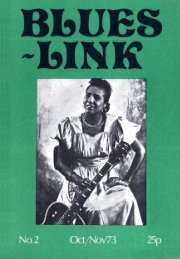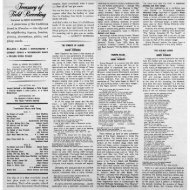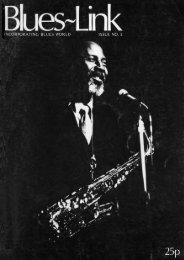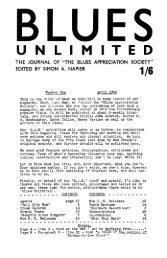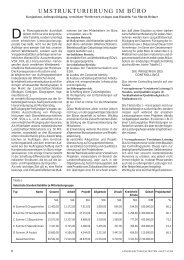The Blues Collection 84: EAST COAST BLUES.- Orbis Publishing ...
The Blues Collection 84: EAST COAST BLUES.- Orbis Publishing ...
The Blues Collection 84: EAST COAST BLUES.- Orbis Publishing ...
You also want an ePaper? Increase the reach of your titles
YUMPU automatically turns print PDFs into web optimized ePapers that Google loves.
<strong>EAST</strong> <strong>COAST</strong> <strong>BLUES</strong><br />
ABOVE: John Cephas, one of the most prominent modern practitioners of East<br />
Coast ragtime guitar, was greatly influenced by Blind Boy Fuller.<br />
OPPOSITE: Buddy Moss also influenced Cephas and Tarheel Slim, among others,<br />
while Moss himself had been inspired by the music of Blind Blake.<br />
influence was so wide and enduring<br />
th at its re v e rb e ra tio n s will sound<br />
repeatedly both in this narrative and<br />
in the accompanying CD/cassette.<br />
R eg io n a l b ia s<br />
If this is a somewhat ragged discussion<br />
of East Coast blues, in a way th a t’s<br />
rather appropriate: between the 1920s<br />
and the 1940s the area’s m usic was<br />
record ed fitfully and haphazardly.<br />
Once it had become an industry tenet<br />
that blues hits came from Texas (Blind<br />
Lemon Jefferson), or Memphis (Jim<br />
Jackson), or from northern cities like<br />
Indianapolis (Leroy Carr) and Chicago<br />
(Tampa Red & Georgia Tom, Big Bill<br />
Broonzy), nobody gave much thought<br />
to the possibilities of the Southeast.<br />
It’s no coincidence that many of the<br />
region’s most fascinating figures were<br />
recorded by Victor: Ralph Peer, the<br />
company’s talent scout for southern<br />
m usic, was genuinely in terested in<br />
what he thought of as idiosyncratic<br />
artists or unusual material.<br />
It was entirely typical, for example,<br />
th at he should be drawn to a p erformer<br />
like Luke Jordan. This intriguing<br />
singer and guitarist, born probably<br />
about 1890, was well known around<br />
Lynchburg in south central Virginia.<br />
He sang blues - his first recording,<br />
‘C hurch B ells B lu e s’ (1 9 2 7 ), was<br />
remembered and alluded to or copied<br />
by several bluesm en over the next<br />
quarter of a century - but he also had<br />
a sto re of tu rn -o f-th e-cen tu ry ‘rag<br />
1000<br />
songs’, like Traveling Coon’, ‘Cocaine’<br />
and ‘Pick Poor Robin Clean’, which display<br />
his unflustered fingerpicking as<br />
well as his eerily high voice.<br />
Another Peer discovery was Julius<br />
Daniels (1902-47), a rich-voiced singer<br />
and guitarist from around Charlotte,<br />
North Carolina. Daniels’ stock of blues,<br />
hymns and rag songs, such as ‘Can’t<br />
Put th e B rid le on T hat Mule This<br />
Morning’ (a variant of a common-stock<br />
song known all over the South), may<br />
have seemed to Peer more rewarding,<br />
commercially and aesthetically, than a<br />
batch of blues all cut from the same<br />
pattern. Unfortunately, record-buyers<br />
don’t appear to have shared his vision.<br />
L o s t in m usic<br />
For an excellent example of how the<br />
blues craze could distort an artist’s<br />
potential we have only to consider the<br />
career of Blind Blake - a brilliant blues<br />
guitarist, it’s true, but capable of much<br />
more, had he only been given more







